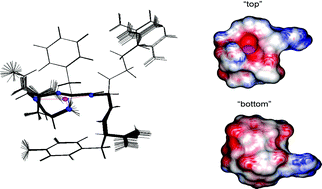The unusual stabilization of the Ni2+ and Cu2+ complexes with NSFRY
Abstract
The binding mode provided by an unprotected

* Corresponding authors
a
Department of Inorganic Chemistry, Medical University of Wroclaw, Szewska 38, 50-139 Wroclaw, Poland
E-mail:
anna.janicka-kloss@am.wroc.pl
b Department of Chemistry, University of Siena, Via A. Moro 53100, Siena, Italy
c Department of Chemical and Pharmaceutical Sciences, University of Ferrara, via L. Borsari 46, Ferrara, Italy
d Laboratory of Biopolymer Structure, Intercollegiate Faculty of Biotechnology, University of Gdansk, Medical University of Gdansk, Kladki 24, 80-922 Gdansk, Poland
e Faculty of Chemistry, University of Wroclaw, F. Joliot Curie 14, 50-383 Wroclaw, Poland
The binding mode provided by an unprotected

 Please wait while we load your content...
Something went wrong. Try again?
Please wait while we load your content...
Something went wrong. Try again?
A. Janicka-Klos, E. Porciatti, D. Valensin, C. Conato, M. Remelli, S. Oldziej, G. Valensin and H. Kozlowski, Dalton Trans., 2013, 42, 448 DOI: 10.1039/C2DT31959D
To request permission to reproduce material from this article, please go to the Copyright Clearance Center request page.
If you are an author contributing to an RSC publication, you do not need to request permission provided correct acknowledgement is given.
If you are the author of this article, you do not need to request permission to reproduce figures and diagrams provided correct acknowledgement is given. If you want to reproduce the whole article in a third-party publication (excluding your thesis/dissertation for which permission is not required) please go to the Copyright Clearance Center request page.
Read more about how to correctly acknowledge RSC content.
 Fetching data from CrossRef.
Fetching data from CrossRef.
This may take some time to load.
Loading related content
